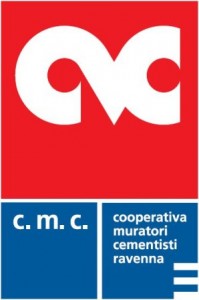Welcome to the second instalment of my blog series on my recent Italian adventure in Emilia Romagna.
So what else did I learn from one of the richest and most developed regions in Europe? One of my early discoveries was how prominent worker co-operatives are in Italy (the term also refers to what we in the UK would call employee ownership).
 My host in Emilia Romagna was CMC di Ravenna, a worker co-operative operating in the construction industry. The company was established in 1901 by bricklayers and cement masons.
My host in Emilia Romagna was CMC di Ravenna, a worker co-operative operating in the construction industry. The company was established in 1901 by bricklayers and cement masons.
It operates internationally delivering large projects, such as shopping centres and petro chemical plants. CMC invited me to speak at its 110th Anniversary celebrations (details of which I will share in a later blog).
 During my stay, I also visited another long established worker co-operative – Camst – the world’s largest catering co-operative. It is involved in restaurants, schools, hospitals, residences, as well as banqueting and eighty per cent of its 10,000 workers are members.
During my stay, I also visited another long established worker co-operative – Camst – the world’s largest catering co-operative. It is involved in restaurants, schools, hospitals, residences, as well as banqueting and eighty per cent of its 10,000 workers are members.
The company was established after WWII by unemployed waiters who spotted the opportunity to sell meals on railway platforms. It operates as a co-operative controlled group with 20 subsidiaries and employee ‘voice’ is promoted through regional and national assemblies.
A more recent driver of employee ownership has been the Marcora Law, passed in 1985. This legislation provided state backing for two funding streams to support co-operatives; a general fund for the development of all types of co-operatives and a special fund to help companies in a crisis. The latter invests in the share capital of phoenix co-operatives, in proportion to employees’ own investment. The mutual funds are capitalised by the three per cent of annual surplus that co-operatives are required to invest in return for tax advantages.
The Government recognises worker co-operatives as an effective means of rescuing companies going into liquidation. They must be viable businesses (often re-engineered) and operating to an approved plan. Many were established in the economic crisis of the 1980s, although large numbers have also been formed in the last few years. There are currently five requests per week in Emilia Romagna and it has proved a successful model with eighty per cent of worker co-ops created in this way still trading.
![]() I met with a number of phoenix co-operatives. Artlining manufacture textiles for neck ties, boasting leading fashion houses such as Armani as customers. The company fell into difficult times and was restructured, with 19 of the original 22 employees remaining after the transfer.
I met with a number of phoenix co-operatives. Artlining manufacture textiles for neck ties, boasting leading fashion houses such as Armani as customers. The company fell into difficult times and was restructured, with 19 of the original 22 employees remaining after the transfer.
![]() Similarly, Greslab – a ceramic tiles business – was restructured saving 57 jobs. Ownership of this business is now split between employees (seventy per cent) and investor members (thirty per cent).
Similarly, Greslab – a ceramic tiles business – was restructured saving 57 jobs. Ownership of this business is now split between employees (seventy per cent) and investor members (thirty per cent).
Aussametal – a metallurgy business – passionately recounted how they had transformed their business. In all cases, what was most evident was the enthusiasm and energy of employees to save and transform their business.
So what were the lessons for Scotland? Quite a few!
Mutual funds provide a virtuous circle of investment within the co-operative sector. Worker co-operatives (employee owned businesses) unleash entrepreneurial spirit resulting in highly competitive businesses. And, the innovative use of subsidiary structures in order to achieve scale and access capital.
Until next time…
And remember…think ‘co-operatively’!
Sarah Deas is the chief executive of Co-operative Development Scotland, a Scottish Enterprise subsidiary, established to help companies grow by setting up consortium, employee-owned and community businesses. It works in partnership with Highlands and Islands Enterprise.